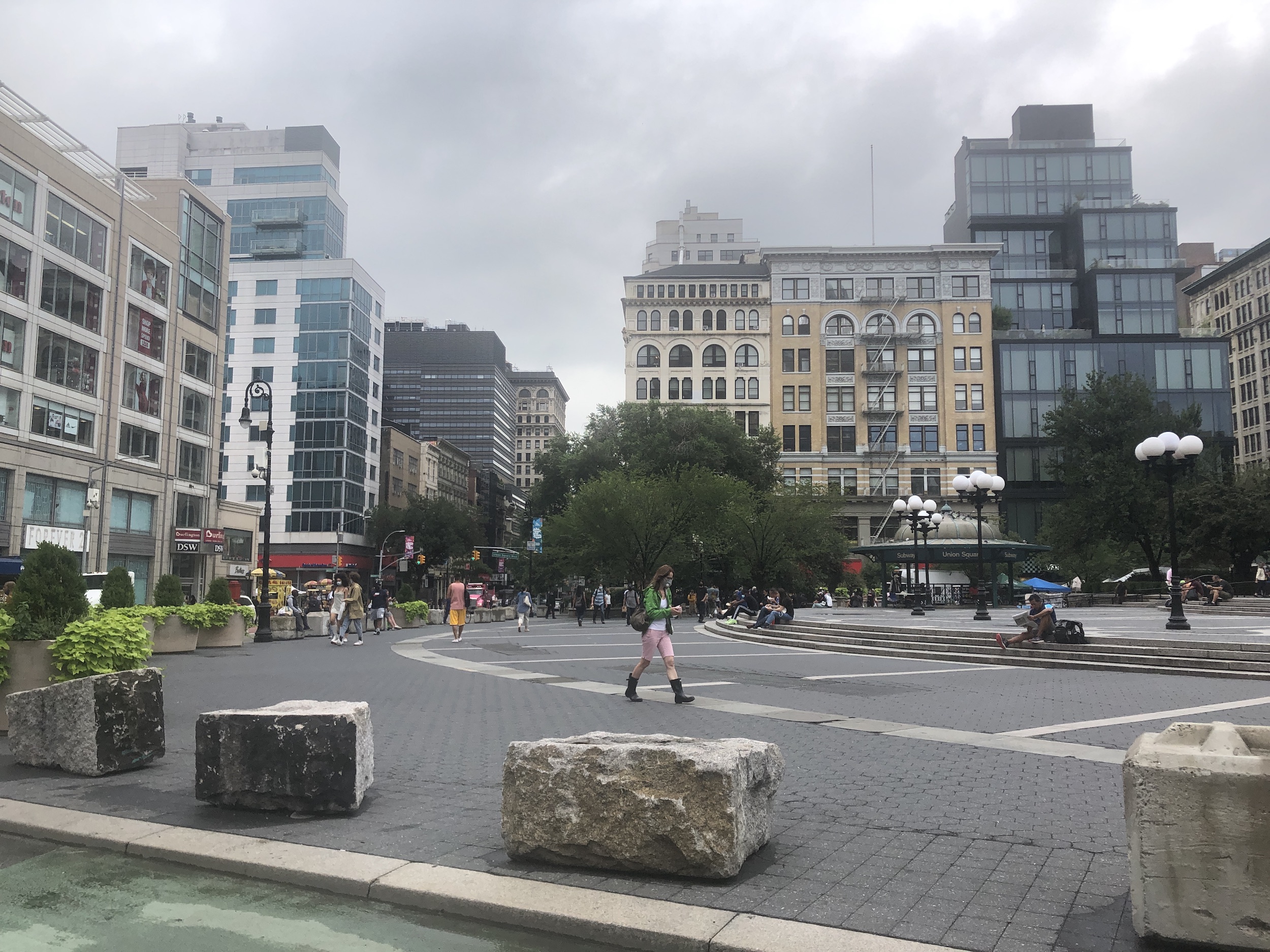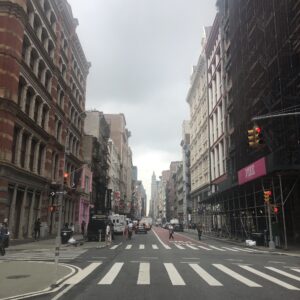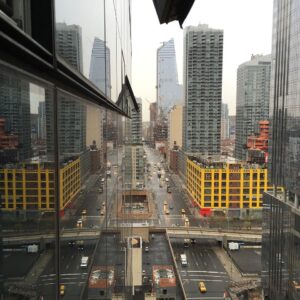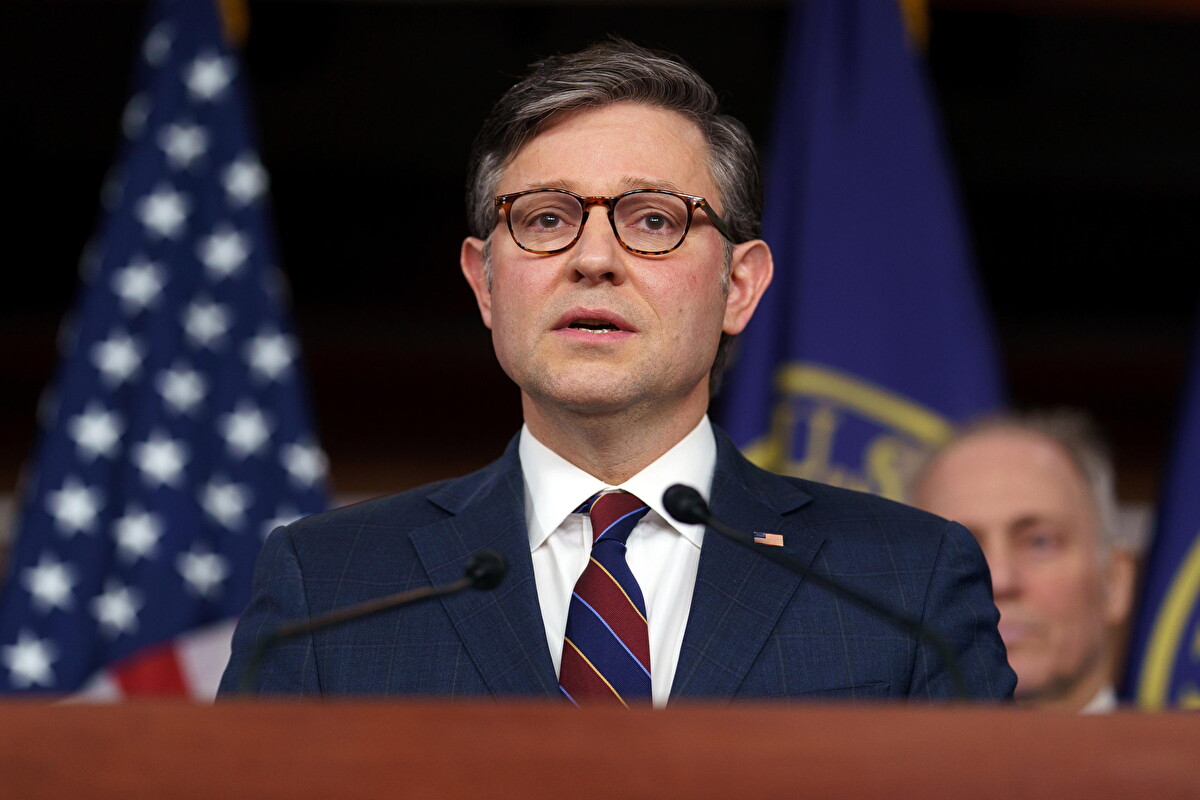These are, without any doubt, unprecedented times even for a city like New York, which has survived very unusual and dramatic moments in the past. Covid-19 has touched every industry indiscriminately. All of them have been damaged in one way or another. However, Hospitality and Travel are indeed, together with Retail and Restaurants, the industries that suffered the most damage. For the first time in the city, everything and everybody was brought to a halt.
Our minds immediately try to find similarities to other times of the past, to where we could compare what is happening today, but maybe, besides a brief couple of months after September 11, 2001, we soon realize that this time, it is a truly unique moment. New York has lived through an unprecedented boom in tourism in the past 30 years. The city came out in the 90’s from very dark times and from financial disarray and social tensions that had lasted throughout the 70’s and 80’s. We all remember the famous headline made by President Ford, when New York asked him for financial assistance when it was on a verge of bankruptcy: “Drop Dead.”

From the 90’s to today, there has been constant growth and incredible build up in the hospitality industry in New York. In 2019, New York reached the incredible number of 65 million visitors; which is astonishing if we think that in the 90’s there were about 25 million. Stellar forecasts were predicting that New York would reach a record number of 67 Million visitors in 2020. New York hotels grew at an unstoppable pace to reach 703 hotels, with about 138,000 rooms available and with more hotels in the pipeline to be opened in 2020, with no sign of slowing down any time soon.
We have seen hotels opening in parts of the city that we would have thought to be unthinkable only a few years ago. Parts of Manhattan where no visitor would have ever thought of venturing suddenly became gentrified, and in no time, they went from being blighted neighborhoods to fashionable and trendy spots. From the Meatpacking District to the Lower East Side, hotels opened everywhere in Manhattan, without even mentioning the large number of hotels, many of them, luxury/trendy, that opened in Brooklyn, now a popular destination rivaling Midtown.
Then at the beginning of March, all of a sudden, all went dark. The city that never sleeps, for the first time, fell asleep and for now, it hasn’t awakened. Most of the hotels of the city shut down, together with pretty much everything else: restaurants, offices, stores, theaters, museums, clubs. The lights went off – everywhere. No one has ever seen New York this way.

The vast majority of hotels closed their doors; from the gigantic Marriott Marquis, Sheraton, Hilton and Hyatt with 1,500 to 2,000 rooms each, to five-star luxury hotels like Four Seasons and The Pierre to the trendy/fashion Refinery and Standard Hotels to the 2 star hotels and hostels. All of them closed at the same time; lights off– all the rooms of the hotels empty and dark. In order to cope with the consequences of a looming financial disaster caused by this prolonged and unprecedented pandemic, some hotels started implementing extreme strategies. Of the few hotels which stayed open, some rented out their rooms to the city to be utilized as homeless shelters, others rented out rooms at very low rates or even made them available for free, to help essential workers, doctors and nurses who were fighting the pandemic. Others just tried to stay open to accommodate the few visitors still coming to New York. Occupancy rates in these
hotels were rarely above ten percent despite the extremely attractive rates which would have been inconceivable only a few months earlier. The industry suffered a sort of silent panic attack that brought a state of general confusion. Since this was an unparalleled event, everyone started thinking of creative ways to stay open, or at least to survive and weather the storm.

Unfortunately, some hotels found it impossible to stay open and closed their doors for good, like the Omni Hotel, The Maxwell, the Edition in Times Square, the Bryant Park Hotel and so on. In a recent article, The Wall Street Journal forecast that about twenty percent of New York hotels might not reopen at all. Hotels started looking for feasible alternative business. Trying to reinvent themselves, some considered turning the hotels into office space, others into apartments. There have been similar changes in the past that often coincided with other bumps in the economy or a change in the market. Some famous hotels of the past like the Stanhope, the Ansonia, the Drake, the Mayfair, The Barbizon and The Morgans, just to mention a few, were all converted into luxury condos. However, this time the change might be more widespread.
On the other hand, as time goes on and weeks turn into months, more and more hotels are planning to reopen. There is however, a lot of uncertainty and with the borders still closed it is very hard to know what is going to happen. Some hotels, which had planned for a reopening in June/July, postponed to September, and now some to October. Most major corporate and entertainment citywide events in the Fall (New York’s high season) have been cancelled: from the opening of the United Nations, to the New York Marathon. Other events might still happen in a very subdued way, like the Thanksgiving Day Parade or the lighting of the Christmas tree in December. It is therefore very hard to know how many visitors New York will welcome this fall.
I was recently talking with some hotel General Managers in New York and they actually asked for my opinion, since I book my clients into their hotels and might have a more immediate sense of the situation. Most of my clients are Italian travelers to the United States and New York in particular. At the moment my view is not very optimistic. Until the borders will reopen and people will be free to travel, it will be very hard to start again. Without foreign visitors entering the US, there is going to be very little change to the current situation.

For example, for the time being, there is virtually zero travel between Italy and the US, with the exception of dual citizens and urgent business. This also includes government business, usually a type of business that is exempt and mostly untouched by financial and social unrest due to the specific nature of their travel, which is for institutional reasons.
We are all looking for a way out or a new approach to business, however at this time, there is only uncertainty. Everybody is adopting Covid-19 measures and everyone is adapting to a new way of operating their business while we all wait for the vaccine. Many hotels will now take your temperature before checking you in. Rooms are sanitized and often kept empty after check out and cleaning for two to three days before checking in a new guest. An online form from the city must be filled out requiring the guest to quarantine if coming from selected States. In room amenities such as gadgets, chocolates, flowers or others have now been replaced by hand sanitizer and masks. Almost all other services in the hotel are closed, such as the spa, gym, restaurants, clubs, rooftop, bars. In many hotels breakfast is available only via room service. Glass partitions have been installed at the front desk and some hotels are trying to automate the check in process as much as possible.

The trend had already begun pre-Covid in some hotels. The Public hotel had a self check- in in place with no front desk agents; some other hotels had check in options available directly on your smart phone. At the Yotel a robot was already going to store your bags without any human interaction. I imagine this process of automation for everything can only accelerate in the near future. The price to pay may however be high and ultimately hurt the hospitality industry by altering the hotel experience by diminishing human interaction, and unfortunately, eliminating many valuable jobs in the process.

A window in the future is opening, however, what it will look like is a question to which we don’t have any answer yet. In the past years in New York there has been a boom of super–trendy and micro hotels. Hotel rooms in these establishments are smaller than the already small New York standards, often only 150-200 square feet. The enormous success of these hotels with Millennials was due not to the sleeping rooms per se, but to the gigantic and vibrant common areas, lounges, the lobby, bar, rooftops and restaurants; always full of life and action where guests could either mingle or ignore one another at their pleasure. We have hotels like Arlo, Public, Freehand and the new concept of Moxy Hotels from Marriott with micro rooms and big public areas. All of this is now rendered difficult to sustain due to Covid-19. We don’t know If this new concept of hotels will survive or change and if it were to survive, how it will change.
There are a lot of questions, with not many answers until the vaccine will become available. There is however, a glimmer of light. New Yorkers finally took back possession of their city. Many New Yorkers are now spending their staycation or weekends in Manhattan hotels and exploring the city without tourists, enjoying and experiencing an unusually uncrowded New York. These New Yorkers are helping New York hotels’ recovery. In some hotels in Manhattan and Brooklyn occupancy has reached eighty percent, which for these days, is an incredible number. Most of the hotel guests are in fact, New Yorkers who can finally afford to stay in these hotels, in terms of rates and in terms of availability. They are flocking to some hotels and bringing them back to life. Many New Yorkers had avoided the city for years, choosing other destinations instead. Many of them are of the younger generations who could not afford New York prices. They are now helping New York! The good omen is that once again, New York will survive and will flourish again as it always does, thanks to the unsinkable spirit of all New Yorkers who are switching the lights back on in this wonderful city, back on, once again.











